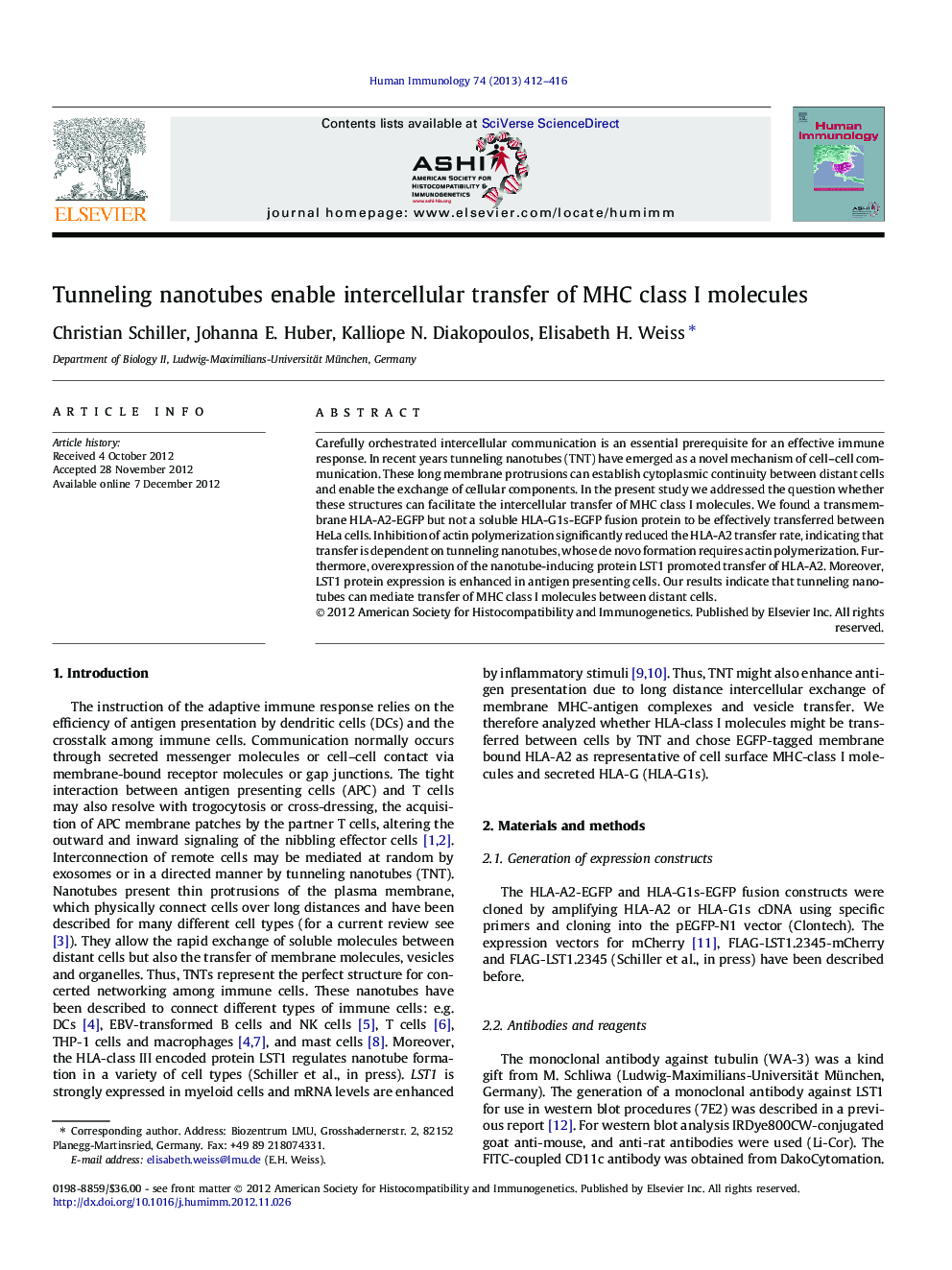| Article ID | Journal | Published Year | Pages | File Type |
|---|---|---|---|---|
| 6116733 | Human Immunology | 2013 | 5 Pages |
Abstract
Carefully orchestrated intercellular communication is an essential prerequisite for an effective immune response. In recent years tunneling nanotubes (TNT) have emerged as a novel mechanism of cell-cell communication. These long membrane protrusions can establish cytoplasmic continuity between distant cells and enable the exchange of cellular components. In the present study we addressed the question whether these structures can facilitate the intercellular transfer of MHC class I molecules. We found a transmembrane HLA-A2-EGFP but not a soluble HLA-G1s-EGFP fusion protein to be effectively transferred between HeLa cells. Inhibition of actin polymerization significantly reduced the HLA-A2 transfer rate, indicating that transfer is dependent on tunneling nanotubes, whose de novo formation requires actin polymerization. Furthermore, overexpression of the nanotube-inducing protein LST1 promoted transfer of HLA-A2. Moreover, LST1 protein expression is enhanced in antigen presenting cells. Our results indicate that tunneling nanotubes can mediate transfer of MHC class I molecules between distant cells.
Related Topics
Life Sciences
Immunology and Microbiology
Immunology
Authors
Christian Schiller, Johanna E. Huber, Kalliope N. Diakopoulos, Elisabeth H. Weiss,
